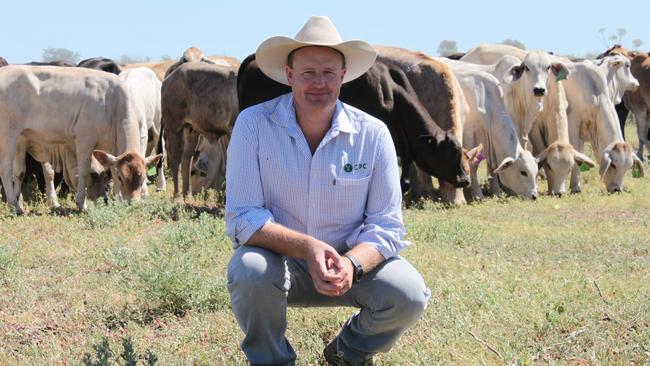Beef producers changing their herd mentality after good rain
Troy Setter runs 300,000 head of cattle on 3.5 million hectares across three states, and he’s in the market to buy more.

Troy Setter runs 300,000 head of cattle on 3.5 million hectares across three states, but while that might seem a lot already, he’s now in the market to buy more.
Good rains have produced soaring prices to record levels as farmers grow more confident the drought is easing and they race to restock their depleted herds.
Some bankers are urging caution, warning the drought is far from over and the coronavirus could sharply weaken strong markets for beef in Asia, but it has not dampened enthusiasm.
Mr Setter is the chief executive of one of the biggest cattle operations in the country, Consolidated Pastoral Company, which operates seven properties in Western Australia, the Northern Territory and Queensland, and also has two feedlots in Indonesia. “The Australian cattle herd is at a 30-year low, so supply is tight,” Mr Setter told The Australian from one of CPC’s properties, Isis Downs Station in western Queensland.
“There has been rain — I would certainly not say drought-breaking rain — but enough to give some producers the ability and confidence to hold their current cattle herd and add weight to their cattle and hang on to their breeders, and we are in some areas seeing people starting to restock, both for trading and for breeding.”
The climatic conditions varied from one part of the country to another, Mr Setter cautioned, and in CPC’s case, depending on the property it is in some cases selling or bringing some cattle on agistment home, but will also be buying and restocking.
Finding cattle to buy was not always easy.
“There are plenty of farmers who are still in drought who have little or no cattle to sell,” Mr Setter said.
All of this has seen cattle prices skyrocket.
The industry uses an index called the Eastern Young Cattle Indicator, and it last week surged to 765c/kg, breaking its August 2016 record of 726c/kg and representing a rise of 60 per cent in less than two months.
On top of the improvement in growing conditions in many areas, the market for beef is good, both domestically and for export.
“We have seen a really increased demand for beef in China and the US,” Mr Setter said.
African swine fever has wiped out huge numbers of pigs in China, and demand for beef as an alternative source of protein was high heading into the coronavirus crisis, with Chinese beef import volumes up 60 per cent in 2019.
A report on the beef market by NAB last week warned the pace of restocking and cattle price hikes brought risks, one of which was that there has been only two months of rain after a protracted drought.
Secondly, NAB said, “three of Australia’s largest beef export markets (China, Japan and South Korea) are facing serious coronavirus outbreaks, which have the potential to negatively impact on demand fundamentals”.
Mr Setter does not disagree.
“We are yet to fully know and understand the impact of the coronavirus both from consumer demand potential changes and also logistics challenges,” he said.
But, he said, “I think cattle production is a long-term game”.
“For breeding cattle, it is several years from breeding to consumption.”




To join the conversation, please log in. Don't have an account? Register
Join the conversation, you are commenting as Logout